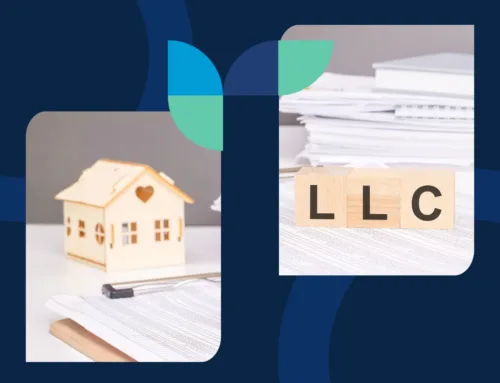Real estate ownership builds wealth. It also builds liability. Courts award larger settlements yearly, and even the best landlords face risks that can’t be controlled. A catastrophic accident could bankrupt your business or force you to liquidate valuable properties.
Standard landlord insurance for rental property only stretches so far. That’s why many landlords and LLC property owners turn to umbrella liability insurance.
This guide explains exactly what umbrella liability insurance is, how it works with your existing coverage, and why it has become essential for landlords who want to protect their assets and future.
The Rise of Umbrella Liability Insurance
Umbrella policies were developed as claims and lawsuit awards began exceeding primary insurance limits. In today’s legal environment, personal injury lawsuits can easily exceed $1 million. Even a small landlord can face crushing legal bills after a severe injury claim.
The growth of rental property ownership through LLCs and holding companies has made umbrella insurance more relevant.
Understanding Umbrella Liability Insurance
Umbrella liability insurance provides additional protection on top of your existing insurance policies. It is excess coverage. It only pays once your underlying landlord or commercial general liability (CGL) policies have reached their payout limits.
Example:
- Your landlord liability limit: $500,000
- Resident guest injury claim: $1.5 million
- Umbrella policy covers the excess $1 million
An umbrella policy may also cover:
- Legal defense costs
- Bodily injury and property damage claims
- Personal injury claims such as libel, slander, false arrest, malicious prosecution, and invasion of privacy
How Umbrella Coverage Works
- Your underlying landlord insurance covers initial claims up to the policy limit.
- Once the landlord insurance limit is reached, your umbrella insurance activates.
- To meet umbrella policy requirements, you must maintain minimum underlying policy limits, often $300,000–$500,000.
Umbrella policies can also include a self-insured retention) (SIR). This is like a deductible and represents the amount you must pay before the umbrella coverage applies in certain non-standard situations.
Why LLC/Property Owners Should Consider Umbrella Coverage
Many landlords believe their LLC structure protects them. LLCs do shield personal assets from most business claims, but:
- LLC assets remain at risk. Courts can seize business property or force liquidation.
- Courts may pierce the corporate veil if proper records aren’t maintained.
- Lawsuits may name both the business and the individual personally.
A single major loss can exceed the combined equity of your business and property assets. Umbrella insurance exists to prevent that outcome.
Real-World Examples
- A resident suffers permanent disability after falling on a poorly lit stairway. Lawsuit settles for $2.5 million.
- A contractor falls from faulty scaffolding while repairing siding. Medical and legal costs exceed $1.2 million.
- A falling tree from your property destroys a neighbor’s car. Total claim: $600,000.
Your landlord policy would pay up to its limit. The umbrella policy would cover the rest.
What Does Umbrella Insurance Cover That Landlord Insurance Doesn’t?
| Coverage Type | Landlord Insurance | Umbrella Liability Insurance |
|---|---|---|
| Property damage to owned buildings | ✅ | ❌ |
| Bodily injury liability (resident or guest injury) | ✅ | ✅ (excess) |
| Personal injury (libel, slander, invasion of privacy) | ❌ | ✅ |
| Legal defense costs (after policy limits) | ❌ | ✅ |
| Large lawsuits exceeding standard policy limits | ❌ | ✅ |
| Damage to others’ property | ✅ (limited) | ✅ (excess) |
This comparison shows why umbrella coverage matters. It fills critical gaps.
Factors to Consider When Deciding on Umbrella Coverage
Portfolio Size & Risk Exposure
The more properties and residents you have, the higher your risk. Multi-unit properties and older buildings also raise exposure.
Location
Properties in densely populated areas or litigious states (e.g., California, New York, Florida) face higher lawsuit risk.
Misconceptions to Avoid
“I have an LLC; I don’t need umbrella insurance.”
False. LLCs protect personal assets from business debts, not business assets from lawsuits.
“I only own one property; I’m low risk.”
Not necessarily. Even one incident can destroy a single-property business.
How Much Umbrella Liability Coverage Do You Need?
Choosing the right level of umbrella liability coverage depends on the size of your property portfolio and your overall risk profile. PURE advises landlords to consider their property values and the potential legal liabilities of resident activity, visitors, and contractors.
As a general guide:
- Landlords with 1–2 properties often start with $1 to $2 million in coverage.
- Owners of 3–10 properties usually carry between $2 and $5 million in coverage to match their increased exposure.
- Large portfolio owners with many units or high-value properties typically invest $5 to $10 million or more to fully safeguard assets.
Remember: umbrella insurance doesn’t just protect your properties. It protects your business operations, legal defense costs, and your future ability to grow. There’s no formula for perfect coverage, but your broker can help evaluate your holdings and risk appetite to recommend a safe range.
The Cost of Umbrella Liability Insurance
Despite its power, umbrella liability insurance remains one of the most cost-effective tools for landlords. Typical premiums range from $300 to $1,000 annually for every $1 million of coverage. That affordability makes umbrella insurance an easy decision for most seasoned property owners.
Many carriers offer discounts if you bundle your umbrella policy with your primary landlord insurance. Bundling also simplifies administration and improves coordination when claims arise.
In short, a small investment in additional coverage can prevent a single catastrophic claim from erasing years of hard work and capital growth.
The Claims Process for Umbrella Coverage
Understanding how a claim progresses with umbrella coverage helps landlords prepare for worst-case scenarios. The process begins like any standard liability claim, but the umbrella policy is a powerful backup when primary coverage falls short.
Here’s how it works:
1. An incident occurs.
An injury, property damage, or personal liability event happens on your rental property. As the property owner, you report the incident immediately to your primary insurance carrier (usually your landlord insurance provider).
2. The primary insurer investigates and pays up to its limit.
The insurer reviews the claim, investigates the circumstances, and covers the costs up to the full liability limit of your landlord insurance policy. This typically ranges between $300,000 and $1 million.
3. Umbrella coverage steps in.
Your umbrella liability insurance activates if the claim exceeds your landlord policy’s limit. The umbrella policy pays the remaining covered damages, protecting you from paying out of pocket.
4. The policyholder pays any required retention.
In certain rare cases—particularly if the umbrella policy covers a claim not addressed by your primary insurance—you may owe a small amount called self-insured retention (similar to a deductible).
Documentation: Your Best Defense
The strength of your documentation can determine the outcome of a claim. Landlords should maintain detailed records at all times, including:
- Photographs of the property condition before and after resident occupancy
- Maintenance logs detailing repairs, safety inspections, and upgrades
- Inspection reports showing regular due diligence to prevent hazards
- Lease agreements and communication records to verify resident responsibilities and history
Clear documentation often reduces legal exposure, speeds claim resolution, and may even discourage lawsuits altogether. It shows the court or insurance adjuster that you operated responsibly and carefully.
How to Obtain Umbrella Liability Insurance
Adding umbrella liability insurance to your portfolio isn’t complicated, but it should be done thoughtfully. Following a clear process ensures that you select the right level of protection without paying for unnecessary coverage. PURE recommends these five essential steps:
1. Assess your risk exposure.
Start by taking stock of your property holdings, resident profiles, and geographic locations. A landlord with multiple multi-family buildings in a densely populated city faces a vastly different risk profile than someone with a single suburban rental home. The size and nature of your portfolio should guide your coverage decisions.
2. Consult with insurance experts.
Do not approach umbrella coverage as a one-size-fits-all purchase. Partner with an experienced insurance broker specializing in rental property and commercial real estate risk. The right advisor will understand the nuances of landlord insurance for rental property and help you anticipate potential liability gaps before they become problems.
3. Align your primary and umbrella policies.
Your landlord insurance and umbrella policy must work together without gaps. Umbrella policies require certain minimum coverage limits on your primary insurance; your broker can help ensure you meet those thresholds so your umbrella policy activates smoothly when needed.
4. Explore cost-saving strategies.
Ask your broker about multi-policy discounts. Many insurance carriers offer preferred pricing when landlords bundle their property, liability, and umbrella policies. Bundling also simplifies claims handling and recordkeeping.
5. Review and adjust coverage regularly.
Your risk exposure evolves as your portfolio grows or changes. Annual policy reviews allow you to increase coverage if you acquire additional properties, add residents, or take on new types of rental units. A proactive review keeps your protection aligned with your business reality.
Conclusion and Recommendations
For rental property owners and LLC landlords, umbrella liability insurance is not just an optional add-on—it is essential asset protection.
It delivers:
- Protection against large lawsuit awards
- Extra legal defense funds
- Peace of mind to focus on growth, not unexpected disasters
Your primary landlord policy alone is no longer enough in today’s legal environment. The right umbrella policy ensures that one bad accident doesn’t erase everything you’ve worked to build.
At PURE Property Management, we help landlords design intelligent insurance portfolios that scale as their businesses grow. We recommend reviewing your policies annually and contacting a professional advisor to ensure your portfolio is fully protected.
Additional Resources
Visit our resource center to learn more about property management:
How to Write a Rent Increase Letter to Your Tenants
Contact us today for a customized risk review or to speak with a PURE expert.








